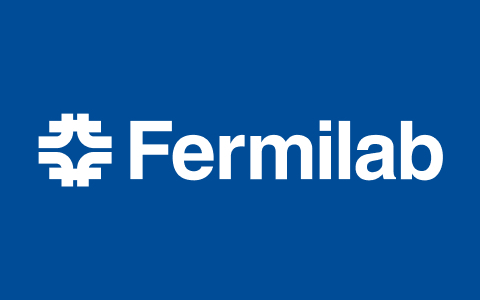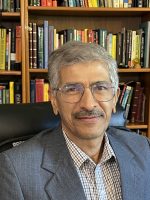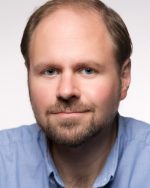The U.S. Department of Energy’s Fermi National Accelerator Laboratory is pleased to announce that Rae Moss will serve as the senior director of the lab’s communication division. She began her role on Oct. 2, coming from Idaho National Lab, where she was the director of communications and external affairs and, most recently, the head of Pacific Northwest external engagement.
“It is an exciting time at Fermilab with the expansion of new facilities and the research that is advancing high energy physics,” said Moss. “I am excited to move the mission of the lab ahead with dynamic communications and stories telling the public about the exciting work being done here.”
In her role as Fermilab’s senior director of communication, Moss will oversee external, internal and digital communications, focusing on increasing awareness and engagement between Fermilab and its key stakeholders; education and public engagement; and conference management.
She will be responsible for advancing the lab’s brand, reputation and mission as Fermilab is leading the development of the international Deep Underground Neutrino Experiment. DUNE is an experiment involving over 1,400 scientists and engineers from around the world who will research the behavior of neutrinos to understand why we live in a matter-dominated universe — in other words, why we are here at all.
Moss has more than 20 years of experience and leadership in communications and outreach at national labs and federal organizations. Prior to her leadership positions at INL, she served as the director of communications and external affairs at Mission Support Alliance, the provider for infrastructure, communications, utilities and security at the Hanford Site in Washington state and held communications positions at Pacific Northwest National Laboratory.
She has been an adjunct professor of marketing at Washington State University in Richland, Washington, and is currently completing her organizational development and communications doctoral degree at the University of Missouri. She earned her MBA in marketing from Duquesne University in Pittsburgh.
Fermi National Accelerator Laboratory is supported by the Office of Science of the U.S. Department of Energy. The Office of Science is the single largest supporter of basic research in the physical sciences in the United States and is working to address some of the most pressing challenges of our time. For more information, please visit science.energy.gov.
The Proton Improvement Plan II project, known as PIP-II, is a billion-dollar enhancement to the U.S. Department of Energy’s Fermi National Accelerator Laboratory accelerator complex. The project is constructing a 215-meter-long state-of-the-art superconducting linear accelerator.
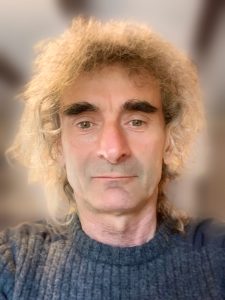
Pantaleo Raimondi. A world-renowned accelerator physicist, Raimondi will lead the PIP-II project, which is building the next-generation Fermilab accelerator complex. Photo: Pantaleo Raimondi
Not only will the new linear accelerator drive a broad physics research program, but it will also provide powerful, high-intensity proton beams. It will enable the world’s most intense neutrino beam to the Deep Underground Neutrino Experiment, DUNE, hosted by the Long-Baseline Neutrino Facility in Batavia, Illinois, and Lead, South Dakota. Once complete, DUNE will be the most comprehensive neutrino experiment ever built; scientists will use it to answer questions about why matter exists, how nature’s four forces could unify and how black holes are formed.
A world-renowned accelerator physicist, Pantaleo Raimondi will step in as PIP-II’s new project director on Dec. 4.
PIP-II has operated under the guidance of interim project director Rich Stanek since April 2022. Before that, Lia Merminga was the PIP-II project director for four years; she left the position when she was appointed director of Fermilab.
“I am extremely excited that Pantaleo accepted to undertake the role of PIP-II project director,” said Cristian Boffo, PIP-II project manager. “He is a world-renowned accelerator physicist with considerable know-how in building complex machines, and he will provide a tremendous boost to PIP-II. I am looking forward to working under his leadership and helping complete this crucial upgrade of the Fermilab accelerator complex.”
PIP-II is the first particle accelerator built in the U.S. with significant contributions from international partners. Institutions in France, India, Italy, Poland, the United Kingdom and the United States will bring together their expertise and capabilities in superconducting radio frequency and associated technologies to construct this state-of-the-art facility.
“Fermilab is a world-leading institution for particle physics and accelerator physics, and the PIP-II project will solidify this reputation,” said Raimondi, currently the Stanford Synchrotron Radiation Lightsource beam dynamics group head at SLAC National Accelerator Laboratory. “It is an honor for me to lead this project with the potential to change the field of physics.”
Raimondi has worked in particle physics since his graduate studies as part of the ALEPH Collaboration at CERN in Switzerland. After graduating, his career has pulled him back and forth between Frascati, Italy, and SLAC in Menlo Park, California. First at ENEA-Frascati in Italy, he worked on design and development of radiofrequency power systems, theoretical and technical analysis of linear accelerators and microtrons, beam transport studies and other topics related to electron accelerators. At SLAC, Raimondi worked on beam-based alignment and final focus systems.
Later, as head of the accelerator division at Italy’s National Institute for Nuclear Physics Frascati Laboratory, INFN-LNF, in Rome, he participated in commissioning DAFNE, an electron-positron collider. Raimondi contributed to improving the understanding and performance of DAFNE and developed new techniques to improve its luminosity.
One of Raimondi’s most impactful and lasting career achievements came when he was accelerator and source division director at the European Synchrotron Radiation Facility, or ESRF, in Grenoble, France. There he invented the concept of “extremely brilliant source,” or EBS, which became the basis of the latest upgrade of the ESRF synchrotron ring, a project that Raimondi successfully led and completed. His revolutionary design is now being replicated by all major synchrotron light sources around the world.
“Pantaleo is a brilliant accelerator physicist and a proven project manager. His leadership on the ESRF light source upgrade shows us that the PIP-II project is in more-than-capable hands,” said Lia Merminga, Fermilab director. “We couldn’t have found a better person to lead our flagship accelerator project that will usher in a new era for science!”
Fermi National Accelerator Laboratory is supported by the Office of Science of the U.S. Department of Energy. The Office of Science is the single largest supporter of basic research in the physical sciences in the United States and is working to address some of the most pressing challenges of our time. For more information, please visit science.energy.gov.
The American Physical Society announced the recipients of the 2023 APS Fellowships. Two U.S. Department of Energy’s Fermi National Accelerator Laboratory scientists, Chandrashekhara Bhat and Robert Zwaska, were selected, a distinction awarded each year to no more than one-half of 1% of current APS members by their peers.
Fermilab heartily congratulates the fellows on this prestigious honor.
Chandrashekhara Bhat
Chandrashekhara Bhat is named an APS fellow by the Division of Physics of Beams “for outstanding and sustained contributions to accelerator physics and technology that has enabled several significant discoveries in particle physics including the discoveries of single top quark production at the Tevatron and Higgs boson production at the Large Hadron Collider.”
The full listing of 2023 fellows can be found on the APS Fellow Archive. The APS fellowship program recognizes members who have made advances in physics through original research and publication or made significant innovative contributions in the application of physics to science and technology.
Fermi National Accelerator Laboratory is supported by the Office of Science of the U.S. Department of Energy. The Office of Science is the single largest supporter of basic research in the physical sciences in the United States and is working to address some of the most pressing challenges of our time. For more information, please visit science.energy.gov.
Sustainability and environmental stewardship are core to the culture and operations that make particle physics experiments at the U.S. Department of Energy’s Fermi National Accelerator Laboratory possible.
Eric Mieland, an environmental protection specialist at Fermilab, and Fermilab Natural Areas, a 501(3)c nonprofit that studies, restores and educates the local community about Fermilab’s ecology, each received U.S. Department of Energy’s 2023 Sustainability Awards for positively shaping Fermilab’s sustainability practices.
The DOE awards highlight people and institutions from across DOE facilities who effectively demonstrate sustainable practices. These practices include conserving energy and water, reducing waste, improving the efficiency of vehicle fleets, acquiring sustainable resources and more. These awards also broadly recognize projects that have reduced costs and increased efficiencies.
Candidates of these awards are nominated in five categories: Lifetime Achievement; Sustainability Champion; Outstanding Sustainability Program/Project; Strategic Partnerships for Sustainability; and Innovative Approach to Sustainability.
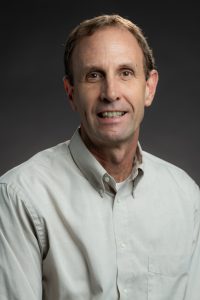
Eric Mieland received a DOE Sustainability Award in the Sustainability Champion category. Photo: Dan Svoboda, Fermilab
A sustainability champion
Eric Mieland received the award in the Sustainability Champion category for his many years of contributions toward Fermilab’s sustainability efforts.
Mieland was instrumental in founding Fermilab’s sustainability management team. What began as a committee has developed into a managerial body with full-time staff that focuses on sustainable practices at the lab. This group includes Fermilab employees, selected by their divisions, who aim to improve the sustainability in the lab’s systems and operations, while also creating awareness about sustainability within the lab.
He has also managed Fermilab’s Environmental Management System, which is a set of processes that monitors and evaluates laboratory operations to protect the surrounding environment.
His efforts have included sustainably improving infrastructure as well. Mieland developed the lab’s first analysis on climate change’s impact to the laboratory, which gets reviewed and updated on a regular basis. Mieland also developed the lab’s recycling programs, critical in helping reduce waste.
In addition to improving sustainability within the lab, Mieland helps educate the surrounding communities on how Fermilab mitigates its effect on climate change through sustainable practices.
A strategic sustainability partnership
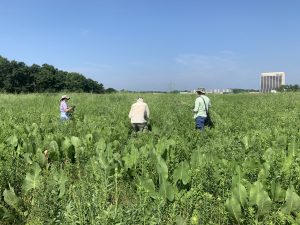
Volunteers from Fermilab Natural Areas, recipient of a DOE Sustainability Award in the Strategic Partnerships for Sustainability category, remove white sweet clover, a biannual invasive species, on the Fermilab campus. Photo: Walter Levernier, Fermilab
Fermilab Natural Areas was recognized with an award in the Strategic Partnerships for Sustainability category. Established in 2006, the non-profit, along with Fermilab’s ecological team, manages the lab’s 2,600 acres of natural areas, which encompass more than 1,000 acres of restored prairie.
FNA is led by volunteers and is independent of Fermilab and DOE.
Between April and December 2022, FNA volunteers contributed approximately 3,750 hours to the maintenance and oversight of the prairie. Volunteers manage invasive species, collect and spread native seeds, monitor rare plants and cross-pollinate species.
Their efforts have improved the natural area’s floristic quality — a metric to track land management efforts by assessing an ecosystem’s vegetation — by 42.9%.
FNA’s work in restoring the prairie also sequesters greenhouse gasses that contribute to climate change.
Through FNA’s many efforts to monitor plant and animal species, the volunteers also serve as organizational representatives and subject matter experts for Fermilab’s Ecological Land Management committee.
“Sustainability is a core aspect of Fermilab’s culture and a strategic pillar of increased focus in executing our mission successfully,” said Fermilab Director Lia Merminga. “Congratulations and thank you to Eric Mieland and Fermilab Natural Areas for playing a big part in shaping our sustainability efforts and helping advance our mission.”
Fermi National Accelerator Laboratory is supported by the Office of Science of the U.S. Department of Energy. The Office of Science is the single largest supporter of basic research in the physical sciences in the United States and is working to address some of the most pressing challenges of our time. For more information, please visit science.energy.gov.
